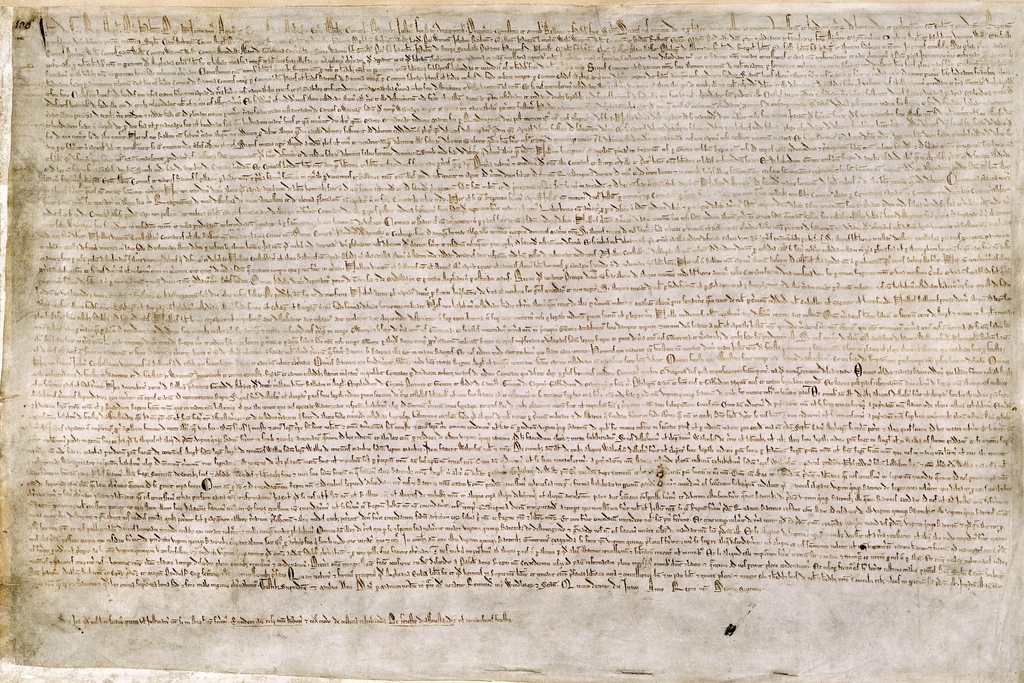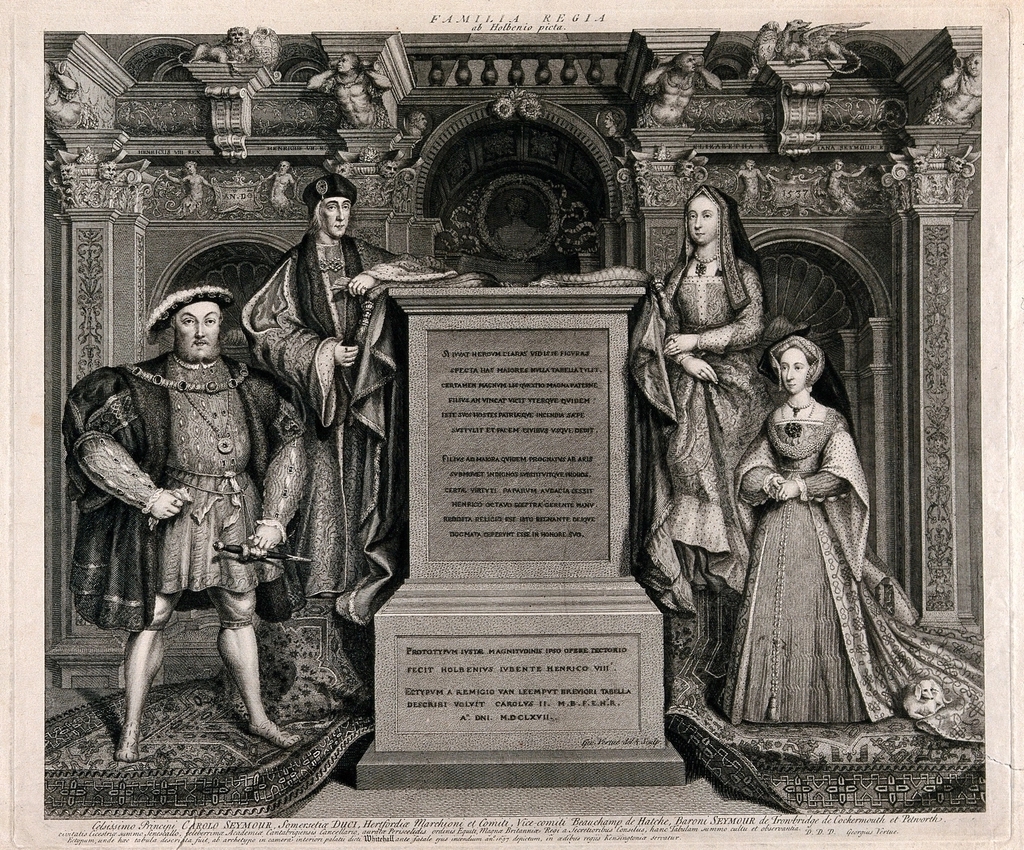Edward III of England, a monarch of immense significance in the medieval era, reigned from 1327 until his demise in 1377. Born on November 13, 1312, Edward ascended to the throne at a mere 14 years of age following the abdication of his father, Edward II. His early reign was tumultuous, marked by the influence of his mother, Queen Isabella, and her lover, Roger Mortimer. However, Edward’s mettle shone through in 1330 when he executed Mortimer and established himself as the sole ruler.
Edward III’s reign is renowned for its military successes, including the commencement of the Hundred Years’ War against France and the victories at Crécy and Poitiers. He also presided over significant domestic developments, such as establishing the Order of the Garter and emerging English as the court language. Edward III’s reign saw England transform into a powerful and assertive nation, laying the groundwork for future dynastic and territorial ambitions.
- Early Life
- Accession To The Throne
- Military Campaigns And Victories
- Political Strategies And Governance
- The Black Death
- The Hundred Years’ War
- Cultural And Architectural Legacy
- Family
- Legacy
Early Life

Edward III was born on November 13 1312, at Windsor Castle, the eldest son of King Edward II and Queen Isabella of France. His birth into the Plantagenet dynasty marked him as the heir to the English throne. As a child, Edward was bestowed with the title Earl of Chester and received a formal education suitable for his royal status.
However, Edward’s early years were fraught with political turmoil. His father’s reign was marred by conflicts with barons and foreign adversaries, leading to a period of instability in England. Furthermore, tensions between Edward II and his nobles and his unpopular favourites strained the monarchy.
In 1327, at 14, Edward III’s father was compelled to abdicate the throne due to mounting opposition led by Queen Isabella and her paramour, Roger Mortimer. This event marked the beginning of Edward III’s reign, albeit under his mother’s and Mortimer’s regency.
Despite his youth, Edward began to assert his authority as he matured, culminating in a dramatic coup in 1330 when he overthrew Mortimer and seized control of the government. This marked the end of his mother’s regency and established Edward III as the sole ruler of England.
The early years of Edward III’s reign were characterised by his efforts to consolidate power and assert his independence from the influence of his mother and her advisors. This period set the stage for Edward’s ambitious military campaigns and his transformation into one of England’s most successful and celebrated monarchs.
Accession To The Throne

Edward III’s accession to the throne was marked by a complex series of events that unfolded against the backdrop of political intrigue and familial strife. In 1327, when Edward was only 14 years old, his father, King Edward II, faced mounting opposition from his nobles and was ultimately forced to abdicate the throne.
The catalyst for Edward III’s accession was the discontent among the English nobility with Edward II’s rule, which was characterised by military failures, fiscal mismanagement, and the influence of his unpopular favourites. Additionally, Edward II’s relationship with Piers Gaveston and later with Hugh Despenser the Younger alienated many powerful barons, further weakening his grip on power.
Queen Isabella, Edward III’s mother, played a pivotal role in his accession. Disenchanted with her husband’s rule and embroiled in an affair with Roger Mortimer, Isabella led a successful invasion of England in 1326 with the support of disgruntled barons. Edward II was deposed, and Isabella and Mortimer effectively ruled in the name of Edward III, who was proclaimed king in January 1327.
However, Edward III’s early years as king were marked by his minority and his mother’s and Mortimer’s dominance. It wasn’t until 1330, when Edward was 17 years old that he asserted his authority and seized power from Mortimer in a dramatic coup. Mortimer was subsequently executed, and Edward III began his personal rule, effectively ending the regency of his mother and her lover.
Thus, Edward III’s accession to the throne was a tumultuous affair shaped by familial tensions, political intrigue, and the ambitions of powerful nobles. It marked the beginning of his reign and set the stage for his subsequent efforts to assert his authority and establish himself as a strong and capable monarch.
Military Campaigns And Victories

Edward III’s military campaigns and victories were instrumental in shaping his reign and establishing England as a formidable power in medieval Europe. Strategic brilliance, innovative tactics, and skilled leadership marked his military successes. Here are some key campaigns and victories during his reign:
Battle of Sluys (1340): In one of the first major engagements of the Hundred Years’ War, Edward III’s fleet decisively defeated a larger French fleet off the coast of Sluys in Flanders. The English victory established naval supremacy in the English Channel and enabled Edward to launch further campaigns on the continent.
Crécy Campaign (1346): Edward III’s army achieved a resounding victory over the French at the Battle of Crécy during his campaign in northern France. Despite being outnumbered, the English longbowmen played a crucial role in securing victory, decimating the French cavalry and infantry.
Capture of Calais (1347): Following the victory at Crécy, Edward III besieged the strategic port city of Calais. After a protracted siege, the town surrendered to the English, providing them with a vital foothold in northern France that would remain under English control for over two centuries.
Poitiers Campaign (1356): Edward III’s forces won another significant victory against the French at the Battle of Poitiers during his second major campaign in France. The English army, led by Edward’s eldest son, the Black Prince, defeated and captured the French King John II, further enhancing England’s position in the Hundred Years’ War.
Treaty of Brétigny (1360): Edward III’s military successes culminated in the Treaty of Brétigny signed in 1360. The treaty temporarily ended hostilities between England and France and secured extensive territorial concessions for England, including sovereignty over large swathes of territory in France.
Edward III’s military campaigns and victories expanded England’s territorial influence and contributed to the consolidation of royal authority and the emergence of a sense of national identity in England. His successes laid the groundwork for future English ambitions on the continent and cemented his legacy as one of England’s greatest warrior kings.
Political Strategies And Governance
During his reign, Edward III employed several political strategies and governance techniques to strengthen royal authority, manage the nobility, and maintain stability within the realm. Here are some key aspects of his political approach:
Centralisation of Power: Edward III sought to centralise power within the monarchy, reducing the influence of powerful nobles and consolidating royal authority. He achieved this through various means, including appointing loyal and capable officials to key positions within the government, such as the chancellor and treasurer. Edward aimed to assert greater control over administration and policymaking by centralising power.
Management of the Nobility: Edward III recognised the importance of maintaining the nobility’s support while ensuring their loyalty to the crown. He employed a combination of rewards, such as grants of land, titles, and privileges, as well as punitive measures, such as fines and confiscations, to manage the nobility and keep potential rivals in check. Additionally, Edward fostered a culture of chivalry and knighthood among the nobility, encouraging their participation in military campaigns and tournaments to bolster their loyalty to the crown.
Financial Reform: Edward III implemented various financial reforms to strengthen the crown’s finances and fund his military campaigns. He levied taxes, such as wool and poll taxes, to raise revenue for the government. Additionally, Edward introduced reforms to the royal exchequer, improving financial accounting and oversight to prevent corruption and mismanagement.
Legal and Judicial Reform: Edward III played a significant role in developing English law and jurisprudence. His reign saw the emergence of common law as a prominent legal system, with the royal courts asserting jurisdiction over a wide range of legal disputes. Edward also enacted legislative reforms, such as the Statute of Labourers (1351) and the Statute of Provisors (1351), to address social and economic issues and curb abuses of ecclesiastical power.
Foreign Policy: Edward III pursued an ambitious agenda to expand English influence and territory abroad. His military campaigns in France, particularly during the Hundred Years’ War, aimed to assert English claims to the French throne and secure territorial gains on the continent. Additionally, Edward forged alliances with other European powers, such as the Holy Roman Empire and the Kingdom of Navarre, to further his strategic objectives and counterbalance the influence of France.
Overall, Edward III’s political strategies and governance techniques were aimed at strengthening royal authority, managing internal and external challenges, and promoting the crown’s interests. His reign witnessed significant developments in governance, law, and diplomacy, laying the foundation for the emergence of England as a powerful and centralised monarchy in the late medieval period.
The Black Death

The Black Death, a devastating pandemic that swept through Europe in the mid-14th century, had significant effects on Edward III and his realm:
Economic Disruption: The Black Death led to a severe disruption of the economy in England. The widespread mortality caused labour shortages, leading to a decline in agricultural production and an increase in wages for labourers. This upheaval in the labour market challenged the traditional feudal system of land tenure and labour obligations, impacting the rural economy that formed the backbone of medieval society.
Social Unrest: The profound social and economic changes brought about by the Black Death contributed to social unrest and discontent among the populace. Labour shortages empowered serfs and peasants to demand better working conditions and higher wages, leading to conflicts with landowners and nobles. Edward III’s government responded to these challenges by enacting laws such as the Statute of Labourers (1351) to regulate wages and restrict the movement of labourers, attempting to maintain the pre-plague social order.
Fiscal Pressures: The economic consequences of the Black Death also affected the royal finances of Edward III’s government. The decline in agricultural productivity reduced tax revenues, while the increased costs associated with administering the realm and funding military campaigns strained the crown’s resources. Edward III faced the challenge of managing these fiscal pressures while continuing to pursue his ambitious foreign policy agenda, particularly in the ongoing Hundred Years’ War with France.
Impact on Military Campaigns: The Black Death had a significant effect on Edward III’s military campaigns during the Hundred Years’ War. The pandemic disrupted military recruitment and supply lines, making it difficult for the English army to maintain its strength and logistics. Additionally, the depopulation caused by the Black Death weakened the workforce pool available for military service, affecting the ability of both England and France to field large armies.
Overall, the Black Death profoundly affected Edward III’s reign, shaping the social, economic, and political landscape of England during this tumultuous period. The pandemic accelerated pre-existing trends of social and economic change, challenging traditional structures of authority and governance and necessitating innovative responses from Edward III and his government to navigate the challenges it posed.
The Hundred Years’ War

Edward III’s link to the Hundred Years’ War is profound and multifaceted. The Hundred Years’ War was a series of conflicts between the Kingdom of England and the Kingdom of France, lasting intermittently from 1337 to 1453. Edward III’s claim to the French throne through his mother, Isabella of France, played a central role in initiating the war.
The specific events linking Edward III to the Hundred Years’ War include:
Claim to the French Throne: Edward III asserted his claim to the French throne in 1337, arguing that as the grandson of Philip IV of France through his mother, he had a stronger hereditary right to the throne than his cousin, Philip VI of France. This claim was a key catalyst for the outbreak of the Hundred Years’ War.
Initial Engagements: The early years of the war saw Edward III launching military campaigns in France to press his claim to the French crown. Victories such as the Battle of Crécy in 1346 and the capture of Calais in 1347 strengthened England’s position and established Edward III as a formidable adversary.
Treaty of Brétigny: In 1360, Edward III secured a significant victory for England with the signing of the Treaty of Brétigny. This treaty ended the first phase of the Hundred Years’ War and secured substantial territorial concessions for England, including sovereignty over extensive territories in France.
Renewed Hostilities: Despite the temporary peace established by the Treaty of Brétigny, hostilities between England and France resumed in subsequent decades. Edward III’s successors, including his son, the Black Prince, continued to prosecute the war with varying degrees of success.
Legacy: Edward III’s involvement in the Hundred Years’ War contributed to the enduring legacy of conflict between England and France. The war had profound consequences for both countries, shaping their respective national identities and political landscapes for generations to come.
Overall, Edward III’s claim to the French throne and his military campaigns in France were pivotal in initiating and shaping the course of the Hundred Years’ War, which had far-reaching implications for the history of both England and France.
Cultural And Architectural Legacy
Edward III left a significant cultural and architectural legacy, particularly in the realm of architecture and courtly culture. Here are some aspects of his legacy:
Gothic Architecture: Edward III was a patron of Gothic architecture, and his reign witnessed the construction of several notable buildings in this style. One of the most famous examples is Westminster Hall, part of the Palace of Westminster, which was rebuilt during his reign and remains one of the oldest buildings in the complex. The hall’s magnificent hammer-beam roof is a testament to the architectural achievements of the period.
Courtly Culture: Edward III’s court was renowned for its abundance and sophistication, setting the standard for courtly culture in medieval England. The king surrounded himself with poets, musicians, and scholars, fostering an atmosphere of artistic patronage and intellectual exchange. Notable figures such as Geoffrey Chaucer, the renowned poet and author of “The Canterbury Tales,” were associated with Edward III’s court.
Order of the Garter: Edward III founded the Order of the Garter in 1348, one of the most prestigious orders of chivalry in Europe. The order’s emblem, the garter, is still worn by members today and is associated with the ideals of chivalry and nobility.
Regal Image: Edward III cultivated a regal image that emphasised his authority and prestige as king. He commissioned elaborate illuminated manuscripts and portraits depicting him as a powerful and virtuous monarch, reinforcing his status as a ruler ordained by divine right.
Military Innovations: While not directly related to cultural or architectural legacy, Edward III’s military innovations, particularly his use of the longbow and infantry tactics, had a lasting impact on English warfare and national identity. The victories at battles such as Crécy and Poitiers, which showcased the effectiveness of English military tactics, contributed to a sense of national pride and identity.
Overall, Edward III’s reign was a period of cultural flourishing and architectural innovation, leaving behind a legacy that continues to influence English culture and identity to this day. His patronage of the arts, promotion of chivalric ideals, and military achievements helped shape the cultural landscape of medieval England.
Family
Edward III’s family life was complex and marked by both personal relationships and dynastic considerations. Here are some key aspects of his family life:
Marriage and Children: Edward III married Philippa of Hainault in 1328, and they had a close and affectionate relationship. Philippa was a supportive consort who bore Edward thirteen children, including several who played significant roles in English history, such as Edward the Black Prince and John of Gaunt.
Dynastic Ambitions: Edward III’s family life was intertwined with his dynastic ambitions. His marriage to Philippa of Hainault solidified alliances with European powers, including the influential County of Hainault. Additionally, Edward sought to strengthen the Plantagenet dynasty through strategic marriages for his children, forging alliances with other noble houses and expanding the family’s influence.
Personal Tragedies: Despite the outward appearance of familial harmony, Edward III faced personal tragedies within his family. Several of his children predeceased him, including his beloved son, the Black Prince, who died before Edward III, leaving the succession uncertain. The loss of loved ones undoubtedly impacted Edward’s personal life and reign.
Court Intrigues: Like many royal households of the time, Edward III’s court was not without its intrigues and tensions. Courtiers vied for influence and favour, leading to rivalries and power struggles within the inner circle of the monarchy. These dynamics could affect family relationships and the stability of the royal household.
Legacy: Edward III’s family life and relationships left a lasting impact on English history. His descendants would go on to play significant roles in the Wars of the Roses, a dynastic conflict that would shape the future of the English monarchy. The marriages and alliances forged by Edward III laid the groundwork for the political landscape of later medieval England.
Overall, Edward III’s family life was shaped by the demands of kingship, dynastic considerations, and personal relationships. While he enjoyed a stable marriage and fruitful partnership with Philippa of Hainault, his familial experiences were also marked by personal tragedies and the complexities of court politics.
Legacy

Edward III’s legacy is multifaceted and far-reaching, encompassing his achievements in military conquests, governance, cultural patronage, and the shaping of England’s identity. Here are some key aspects of his legacy:
Military Prowess: Edward III’s military successes, particularly during the Hundred Years’ War, established England as a formidable military power in Europe. His victories at battles such as Crécy and Poitiers demonstrated the effectiveness of English longbow tactics and contributed to a sense of national pride and identity.
Political and Administrative Reforms: Edward III implemented significant reforms aimed at strengthening royal authority and governance. His centralisation of power, financial reforms, and legal innovations laid the groundwork for the development of the English monarchy and legal system.
Cultural Patronage: Edward III was a patron of the arts and culture, fostering a vibrant courtly culture that attracted poets, musicians, and scholars. His establishment of the Order of the Garter and patronage of Gothic architecture left a lasting mark on English cultural and architectural heritage.
Dynastic Legacy: Edward III’s numerous children and descendants played significant roles in English history, shaping the course of dynastic conflicts such as the Wars of the Roses. His strategic marriages and alliances helped consolidate the power and influence of the Plantagenet dynasty.
National Identity: Edward III’s reign coincided with a period of growing national consciousness in England. His military triumphs, patronage of English culture, and promotion of chivalric ideals contributed to the emergence of a distinct English identity and pride in the nation’s achievements.
Historical Memory: Edward III is remembered as one of England’s greatest medieval monarchs, revered for his military prowess, political acumen, and cultural patronage. His reign represents a pivotal period in English history, marked by both triumphs and challenges, that continues to be studied and remembered today.
Overall, Edward III’s legacy encompasses his contributions to the English military, political, and cultural life, as well as his lasting impact on the development of the English nation and monarchy. He is remembered as a powerful and influential monarch whose reign left an indelible mark on the history of England.






Leave a comment